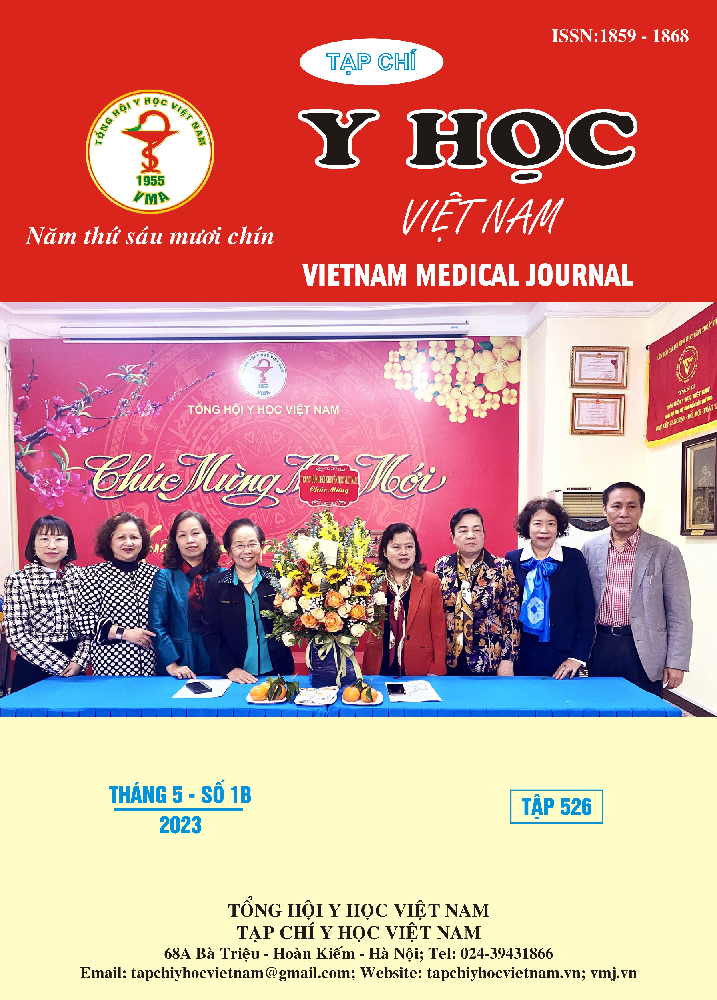CHARACTERISTICS OF COAGULATION ABNORMALITIES IN ACUTE LIVER FAILURE PATIENTS BY THROMBOELASTOMETRY (ROTEM)
Main Article Content
Abstract
Objective: to assess the characteristics of hemostatic disorders by thromboelastometry (ROTEM) in patients with acute liver failure. Subjects and methods: observational study included 52 patients with acute liver failure treated at Poison Control Center of Bach Mai hospital from 8/2018 to 7/2019. Results: Male accounted for 55.8%, mean age was 53.8 (19-87). In the INTEM and EXTEM channels, normal CT values were common (65.4% and 61.5%). In FIBTEM channel, CT value was mainly prolonged (63.5%). In the INTEM channel, the MCF was mostly normal (69.2%). The clot amplitudes in EXTEM and FIBTEM channels were mostly normal (67.3% and 73.1%) with only 1 case of increased clot amplitude in A5. On ROTEM, there was mainly hypocoagulation (59.61%), 11.53% were hypercoagulation, increased fibrinolysis accounted for 34.6%. The hypocoagulation status was caused by decreased endogenous and exogenous coagulation factors, decreased fibrinogen (34.6%, 36.5%, 38.5%), rarely due to platelet disorders (7.7%). Among patients with hypocoagulable status on ROTEM, the number of patients with multiple disorders accounted for a higher proportion (56.25%). Conclusion: ROTEM helps to evaluate in more details the complex hemostatic disorders in patients with acute liver failure.
Article Details
Keywords
ROTEM, acute liver failure
References
2. Wendon J, Cordoba J, Dhawan A, et al (2017). EASL Clinical Practical Guidelines on the management of acute (fulminant) liver failure. Journal of Hepatology, 66(5), 1047–1081.
3. Yoo Goo Kang, Douglas j. Martin et al (1985). Intraoperative changes in boold coagulation and thrombelastographic monitoring in liver transplantion. Anesth Analg, 64(9), 888–896.
4. Klaus Görlinger, Antonio Pérez-Ferrer, Daniel Dirkmann et al (2019). The role of evidence-based algorithms for rotational thromboelastometry-guided bleeding management. Korean J Anesthesiol, 72, 297 – 322.
5. Herbstreit EM, Winter JP et al (2010). Monitoring of haemostasis in liver transplantation: comparison of laboratory based and point of care tests. The Association of Anaesthetists of Great Britain and Ireland, 15, 44 – 49.
6. Gabriel Dumitrescu, Anna Januszkiewicz, Anna Ågren et al (2015). The temporal pattern of postoperative coagulation status in patients undergoing major liver surgery. Thrombosis Research, 136(2), 402–407.
7. Trần Thị Hằng, Nguyễn Văn Chỉnh, Trần Thị Thanh Huyền và cộng sự (2017). Đặc điểm rối loạn đông máu và bước đầu nhận xét hiệu quả xét nghiệm ROTEM trên người cho chết não tại bệnh viện Việt Đức, Tạp chí nghiên cứu y học, 25, 10 – 13


